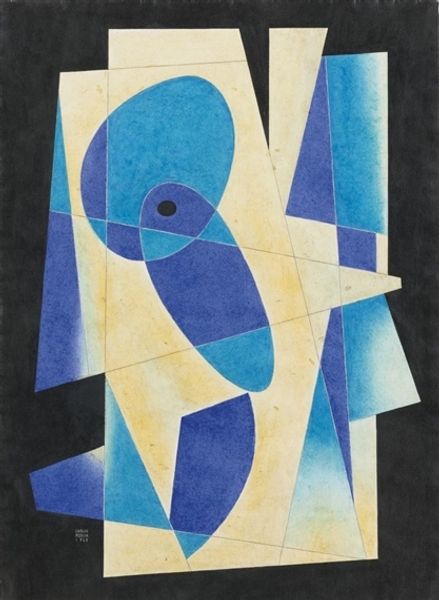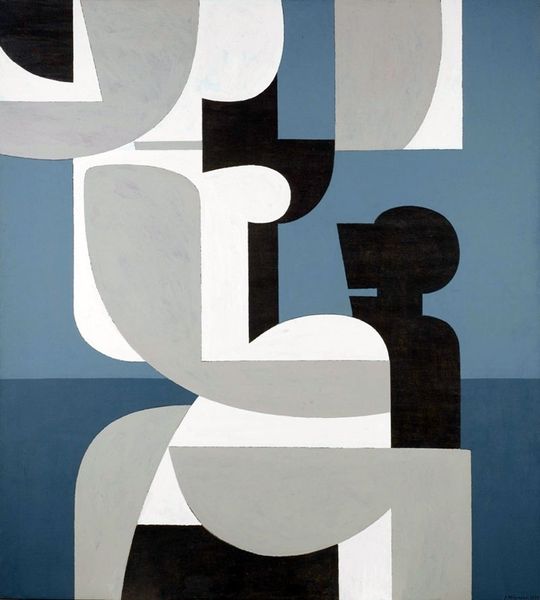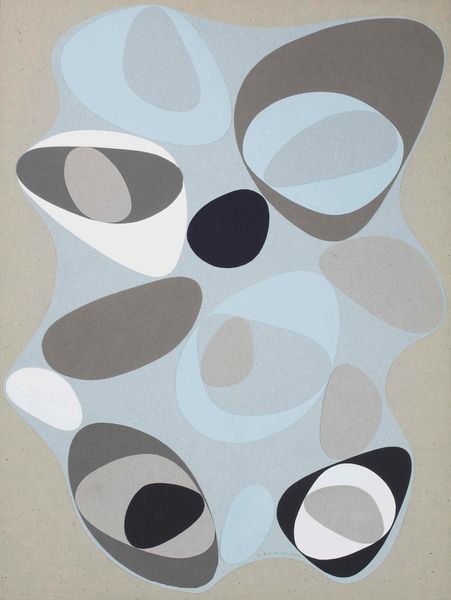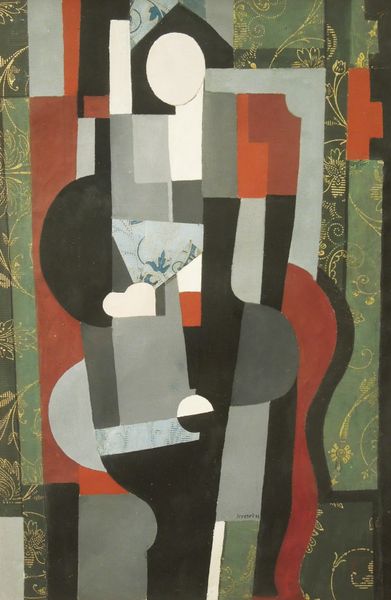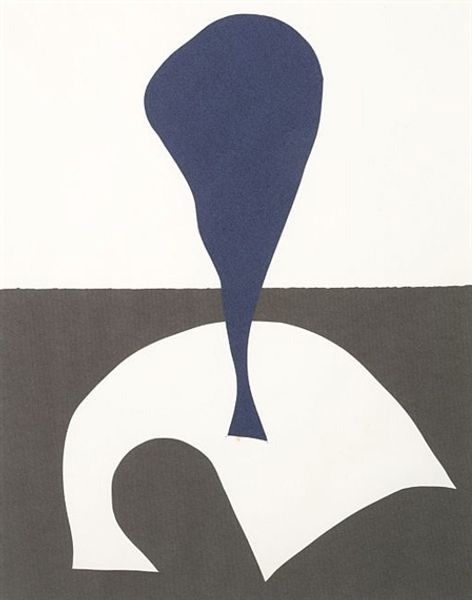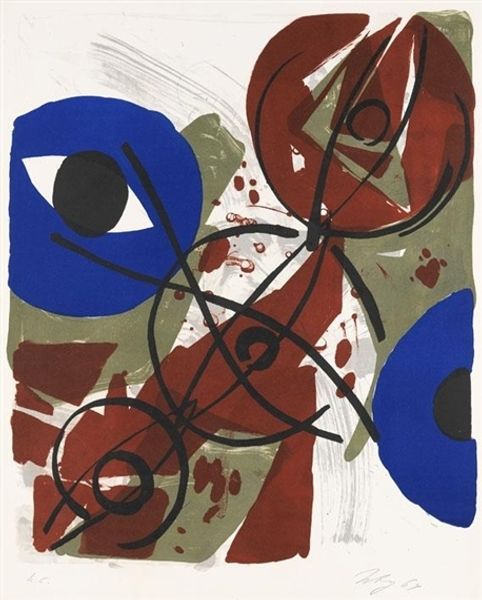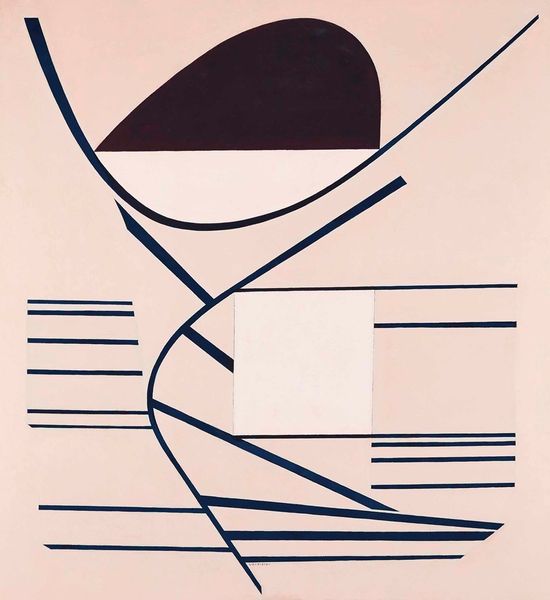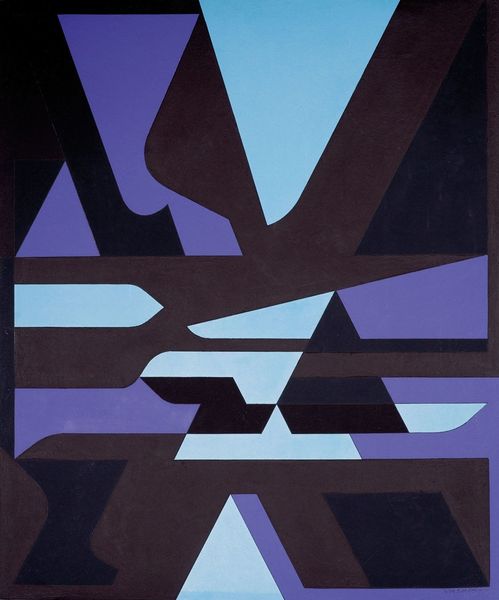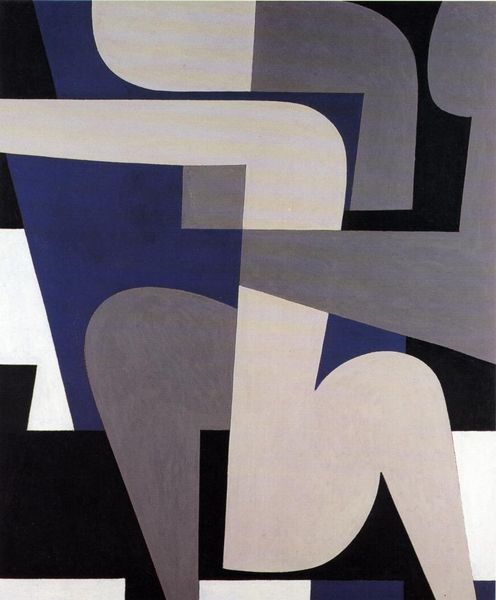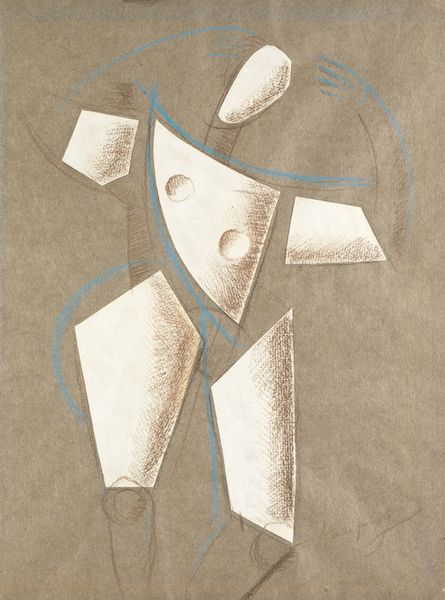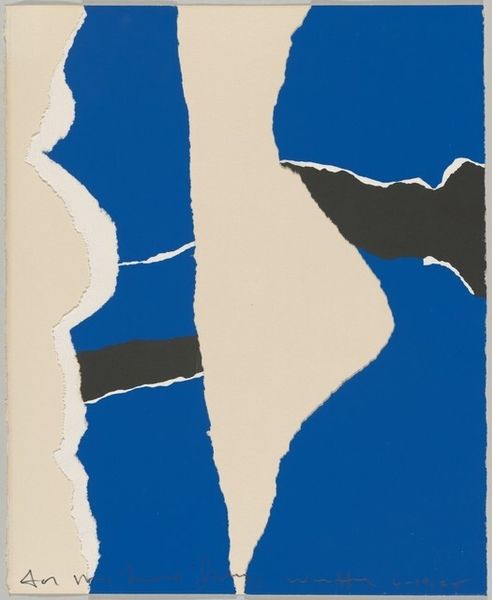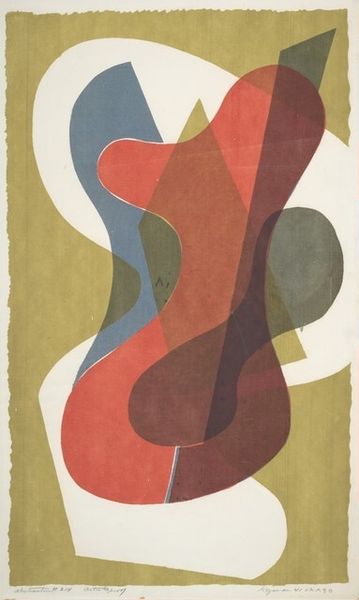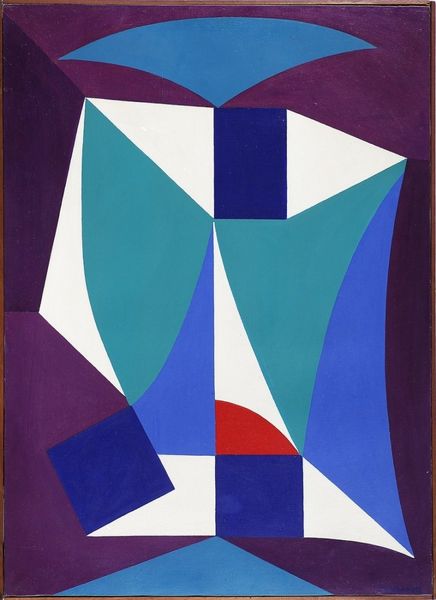
painting, acrylic-paint
#
abstract-expressionism
#
blue and white
#
painting
#
pop art
#
acrylic-paint
#
form
#
geometric-abstraction
#
abstraction
Copyright: Leo Leuppi,Fair Use
Editor: Here we have Leo Leuppi's "Wachstum II" from 1950, an acrylic painting dominated by geometric forms in blue, grey and white. I'm struck by how these shapes seem to simultaneously float and interlock. How do you interpret this work, especially in relation to its materials and creation? Curator: It's fascinating to consider this piece through a materialist lens, especially the layering of acrylic paint. Leuppi's careful application and manipulation of this relatively new medium, especially given its 1950 creation, invites consideration of process. Consider the social context: postwar Europe, mass production was transforming everyday life. How might these emerging technologies and industrial methods be echoed, or resisted, in Leuppi’s careful layering of form? Do you see evidence of a tension between handcrafted artistry and industrial ideals? Editor: I see what you mean. The clean lines and simplified forms could reflect the influence of industrial design. But the subtle variations in color and the slightly uneven edges of the shapes feel very hand-done. Almost as if Leuppi is hinting at the limitations of industrial replication. Curator: Precisely. And let’s not forget the canvas itself—the very ground upon which this ‘growth’ occurs. The weave and texture, usually hidden by layers of traditional oil paint, are left relatively exposed, adding another layer to this material dialogue. What is Leuppi trying to “grow” here, and using what means? Is it an artistic expression, an inquiry into mass production, or a social critique? Editor: It makes you think about what "growth" means in an increasingly industrialized world. Maybe he's not just depicting growth but also questioning the *how* and *why* behind it. This perspective on the materiality and means of production makes the artwork speak differently! Thanks! Curator: Exactly. By understanding its historical materials and considering the context of its creation, we move beyond pure aesthetics to investigate the economic and social forces that shaped its production and can influence our understanding of the artist's vision.
Comments
No comments
Be the first to comment and join the conversation on the ultimate creative platform.
